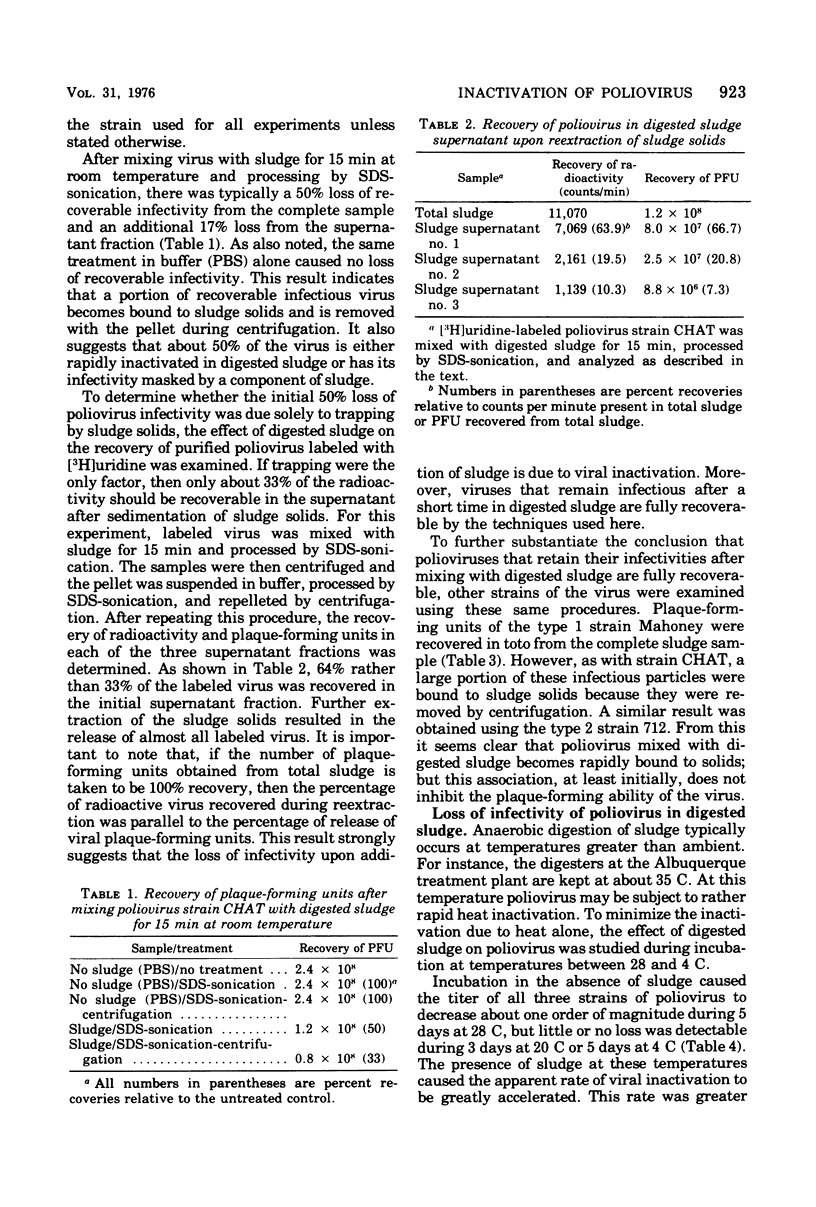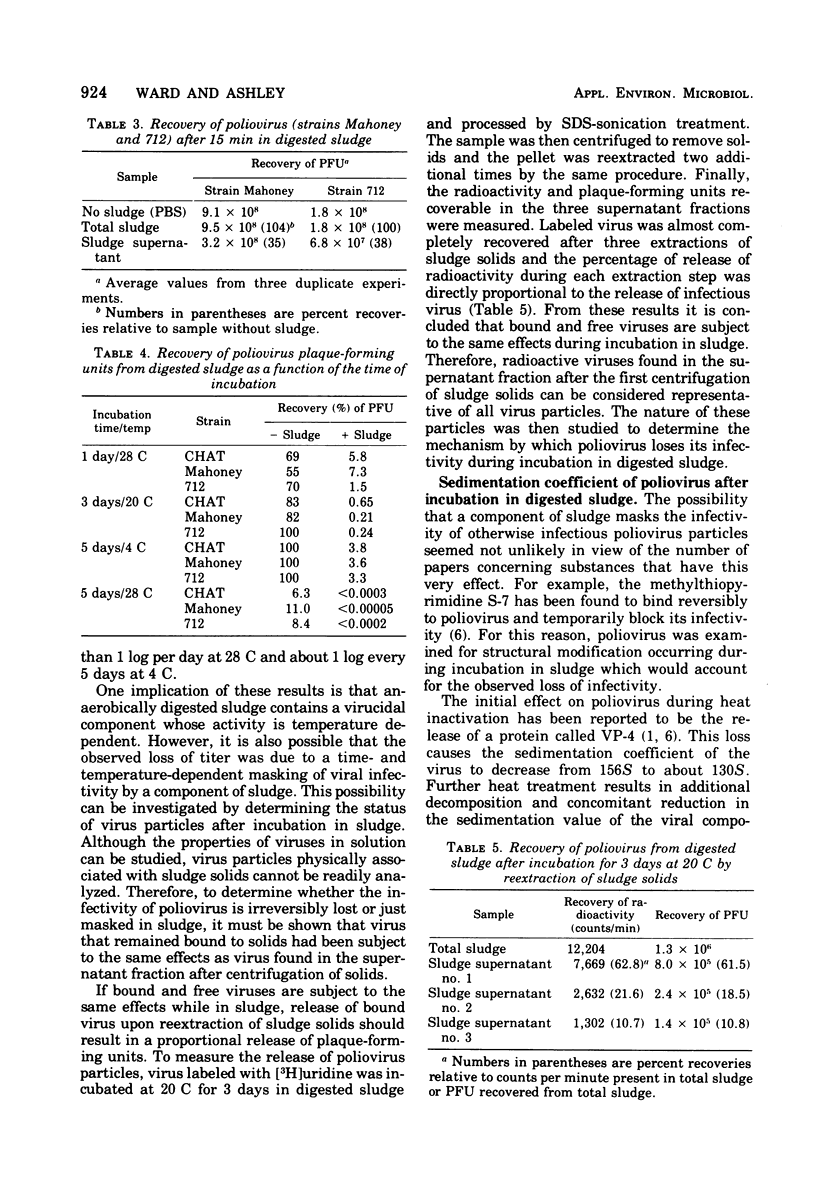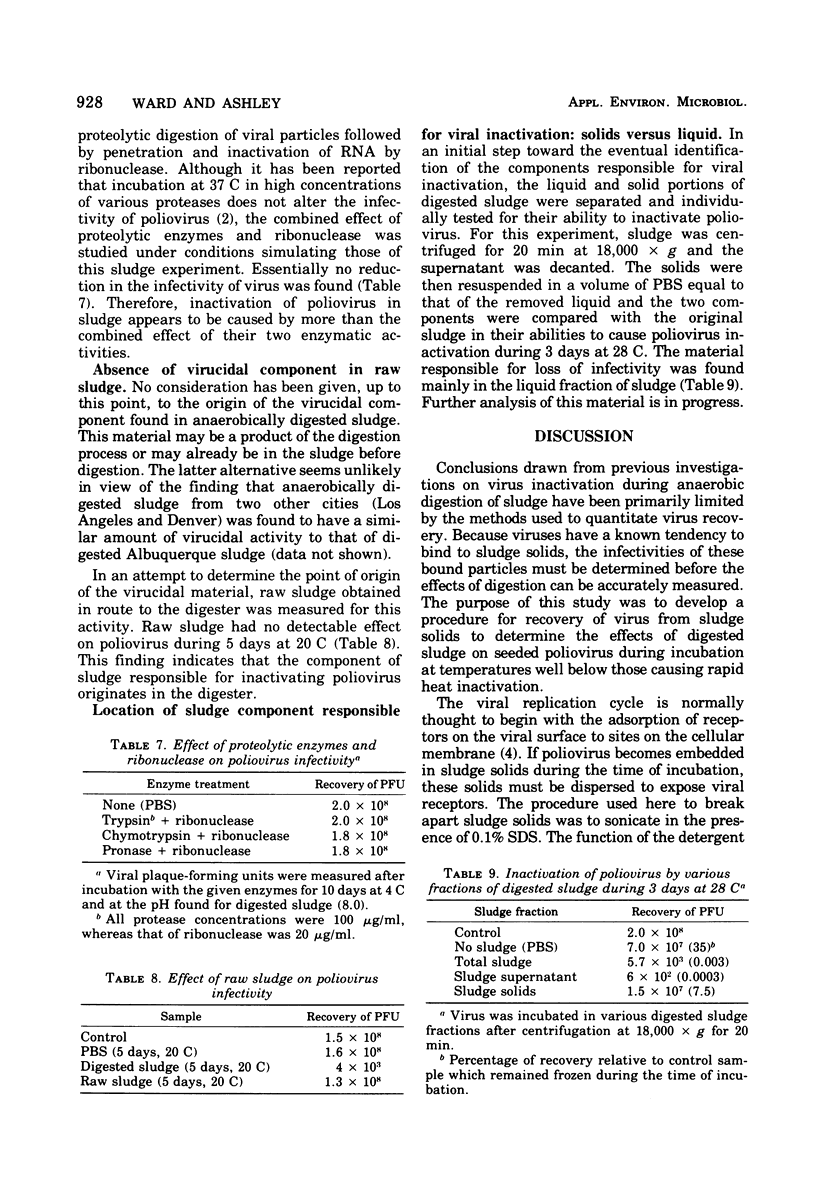Abstract
The effect of anaerobically digested sludge on poliovirus during incubation at temperatures between 28 and 4 C was studied. Although virus was fully recoverable from sludge, its infectivity decreased in proportion to the time and temperature of incubation. The rate ranged from greater than 1 log per day at 28 C to about 1 log every 5 days at 4 C. The mechanism of inactivation was studied at the lower temperature where the sedimentation coefficients of most inactivated particles were not detectably modified. The ribonucleic acid (RNA) of these particles appeared to have been nicked and had an average sedimentation value about 70% that of RNA from infectious virus. Since the specific infectivity of RNA from particles recovered from sludge was directly proportional to that of the particles from which it was extracted, loss of infectivity was probably due to inactivation of RNA. Some breakdown was also found in the two largest viral proteins of inactivated particles. Thus, the mechanism of inactivation may be cleavage of viral proteins followed by nicking of encapsulated RNA. Because no virucidal activity was found in raw sludge, this component of digested sludge appears to be a product of the digestion process.
Full text
PDF









Selected References
These references are in PubMed. This may not be the complete list of references from this article.
- Breindl M. The structure of heated poliovirus particles. J Gen Virol. 1971 Jun;11(3):147–156. doi: 10.1099/0022-1317-11-3-147. [DOI] [PubMed] [Google Scholar]
- FRANKLIN R. M., WECKER E. Inactivation of some animal viruses by hydroxylamine and the structure of ribonucleic acid. Nature. 1959 Aug 1;184:343–345. doi: 10.1038/184343a0. [DOI] [PubMed] [Google Scholar]
- JOKLIK W. K., DARNELL J. E., Jr The adsorption and early fate of purified poliovirus in HeLa cells. Virology. 1961 Apr;13:439–447. doi: 10.1016/0042-6822(61)90275-6. [DOI] [PubMed] [Google Scholar]
- Lonberg-Holm K., Gosser L. B., Kauer J. C. Early alteration of poliovirus in infected cells and its specific inhibition. J Gen Virol. 1975 Jun;27(3):329–342. doi: 10.1099/0022-1317-27-3-329. [DOI] [PubMed] [Google Scholar]
- Oberg B. Biochemical and biological characteristics of carbethoxylated poliovirus and viral RNA. Biochim Biophys Acta. 1970 Apr 15;204(2):430–440. [PubMed] [Google Scholar]
- Ramanathan S., Wolynec C., Cutting W. Antiviral principles of Propionibacteria-isolation and activity of propionins B and C. Proc Soc Exp Biol Med. 1968 Oct;129(1):73–77. doi: 10.3181/00379727-129-33253. [DOI] [PubMed] [Google Scholar]
- Ward R. L., Porter D. D., Stevens J. G. Nature of the scrapie agent: evidence against a viroid. J Virol. 1974 Nov;14(5):1099–1103. doi: 10.1128/jvi.14.5.1099-1103.1974. [DOI] [PMC free article] [PubMed] [Google Scholar]
- Ward R. L., Stevens J. G. Effect of cytosine arabinoside on viral-specific protein synthesis in cells infected with herpes simplex virus. J Virol. 1975 Jan;15(1):71–80. doi: 10.1128/jvi.15.1.71-80.1975. [DOI] [PMC free article] [PubMed] [Google Scholar]


